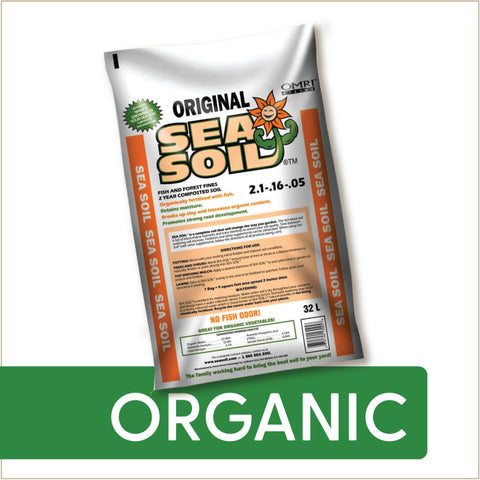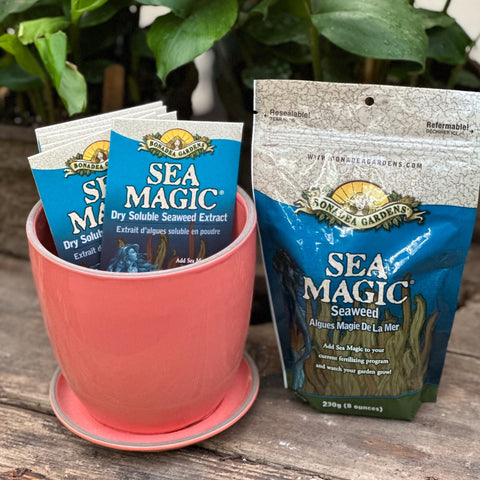Seeds - Parsley, Italian Flat Leaf OG (HM)
$4.79
This item may be out of season or currently out of stock. Please check back.
Order info: This item is available for online ordering within Canada. Please choose shipping or local pick-up at check out.
Description: Choice, flat-leaf variety that many chefs prefer over the curly types. Bushy plants produce a continuous supply of large flat leaves with excellent flavour.
Notes: This variety is often confused with Cilantro, which is an all-together different plant; the two have very different flavours! If wintering parsley indoors, keep pots in the coolest room that has direct sun. Also, do not be shy to trim plants right down several times per year - they will reward you with abundant regrowth!
Pack Size: 0.89 g (1/32 oz)
Latin Name: Petroselinum crispum var. neapolitanum
Alternative Names: Flat Leaf Parsley
Main Uses: Culinary
Zone Hardiness: Annual or biennial
Exposure: Part sun
Height: 35 cm (14 inches)
Flowering Time: Second year, typically in mid-spring
Certified Organic: USDA Certified Organic
Germination: 7-14 days at 21ºC.
Sowing Indoors: Seeds may be soaked in warm water for 24 hours before planting (discard the water that the seeds were soaked in). Start 4-6 weeks before last frost, in 3" pots. Provide warmth and bright light. For best results, apply Sea Magic™ kelp from first watering. Apply a seedling-starter fertilizer such as Evolve Seedling once the second set of true leaves has appeared, and then alternate between the kelp and seedling starter until transplant.
Planting depth: 1/4" - push seed firmly into soil medium.
Plant Spacing: 6" to 12" apart.
Planting out: Plant in well-drained, fertile soil once seedlings have well-developed roots, soil has warmed, and all chance of frost is past. Prefers full sun to partial shade.
Tips: Parsley grows well in containers.
Harvesting: Harvest parsley by cutting leafy stems with a sharp pair of scissors. Up to 50% of the plant can be cut back at any given time.
Growing in Containers: Well suited to pots 6-8 inches and up.
Fertilizing (Containers): Amend potting soil with 25% compost, then fertilize weekly with a balanced organic plant food through the active growing season.
Watering (Containers): Water deeply when top inch of the soil feels dry to the touch.
Growing in Mixed Planters: Excellent for larger mixed planters such as mixed herb planters.
Fertilizing (Garden): Amend garden soil with compost annually. No further fertilizer required.
Watering (Garden): Water new transplants daily for the first two weeks; once established, watering is only required under drought conditions.
Beneficials Attracted to this Plant:
- Swallowtail butterfly caterpillars love to feed on parsley. It is well worth planting a few extra pots for these beautiful creatures.
Special Requirements for Cold Climate Gardeners: Parsley flowers in its second year, and does not continue to produce fresh leafy growth once flowering is complete. Cutting flowers back does not encourage more leafy growth, so it is better to allow flowers to mature for seed. Allow plants to seed themselves in the garden, or collect the seeds and sow them your self the following spring.
Pest/Disease Issues:
- When allowed to go to seed, parsley will attract beneficial hoverflies to your garden. Some species of hoverfly larvae are known to eat aphids, thrips and other destructive insects.
- Parsley is believed to repel harmful beetles.
Suitability for Indoors: Requires a cool, sunny window for winter growth. Does well in a bright window during the spring and summer.
Exposure: Full sun (brightest location best, even though parsley prefers some shade outdoors)
What about Grow Lights? Improves winter growth, but not required.
General Indoor Care: Parsley will not thrive indoors if positioned too close to heating or air conditioning vents.
Indoor Container Suggestions: Minimum 6" pots with drainage holes.
Winter Fertilizing: Add 25% quality compost when potting up for indoors. If growing inside during spring/, fertilize every week with a balanced organic fertilizer. In winter, no additional fertilizer is required (unless under lights). summer
Winter Watering: Water deeply, then allow soil to be dry to the touch. Less water is required during the winter months (except under lights)




